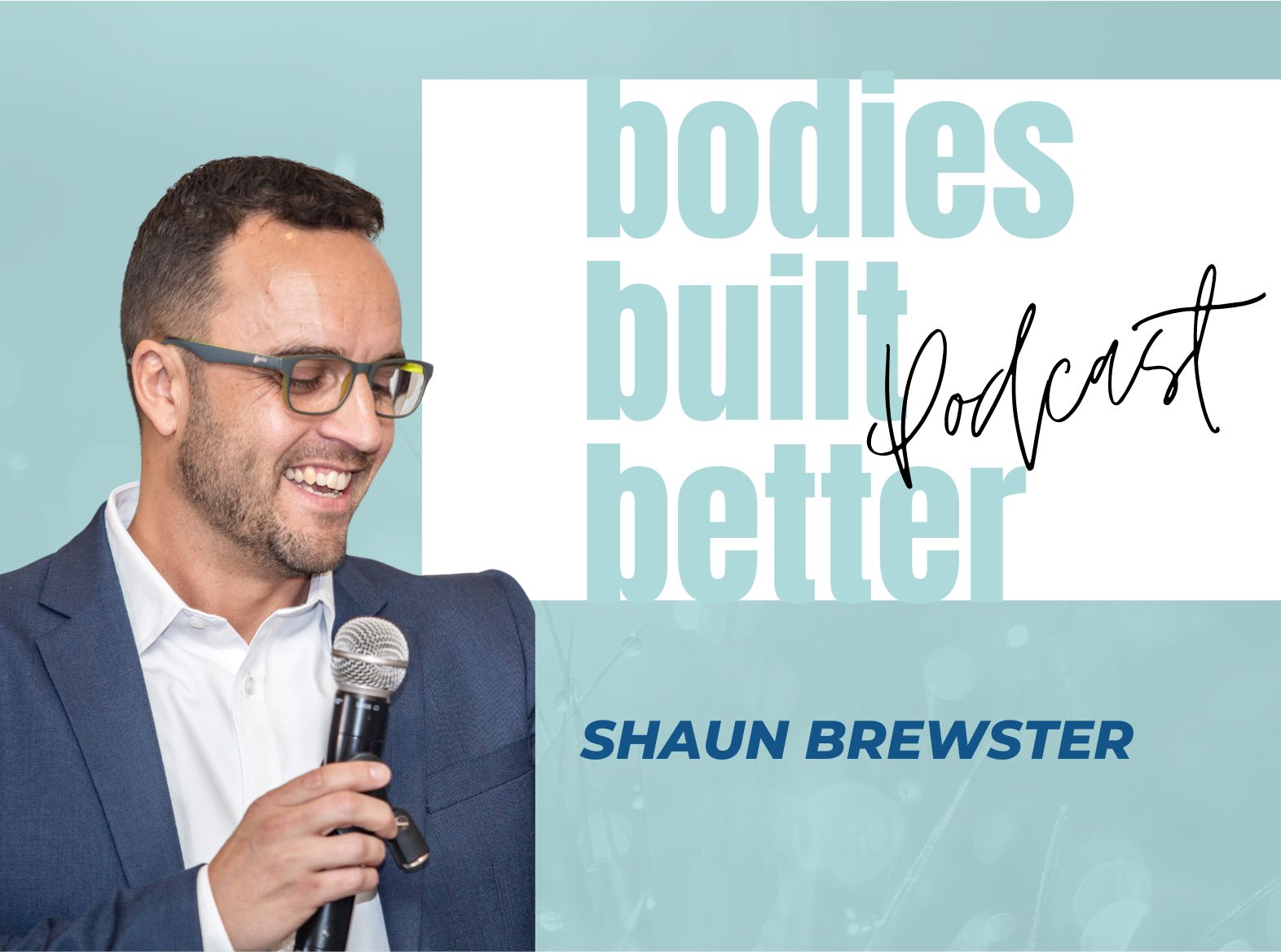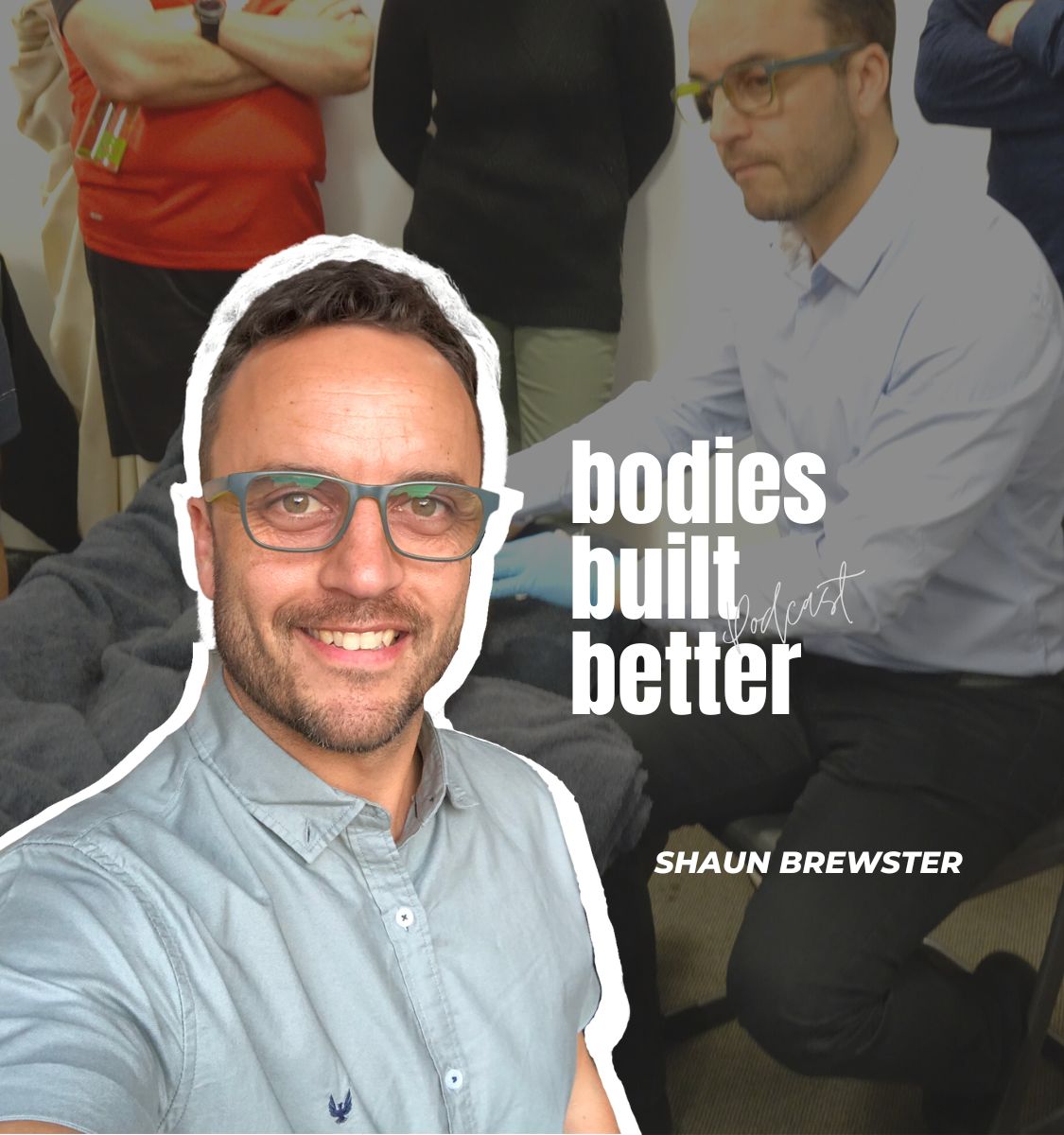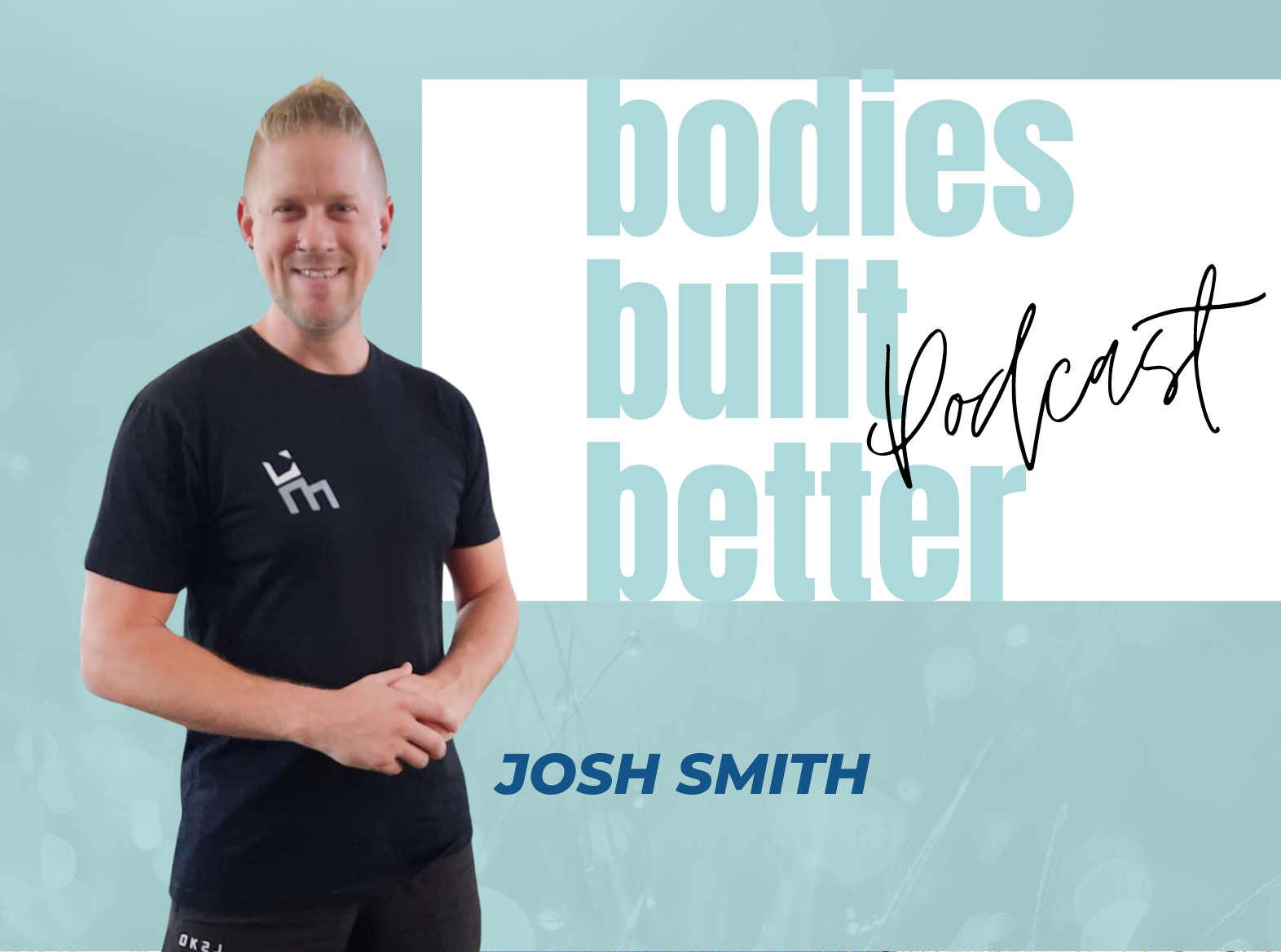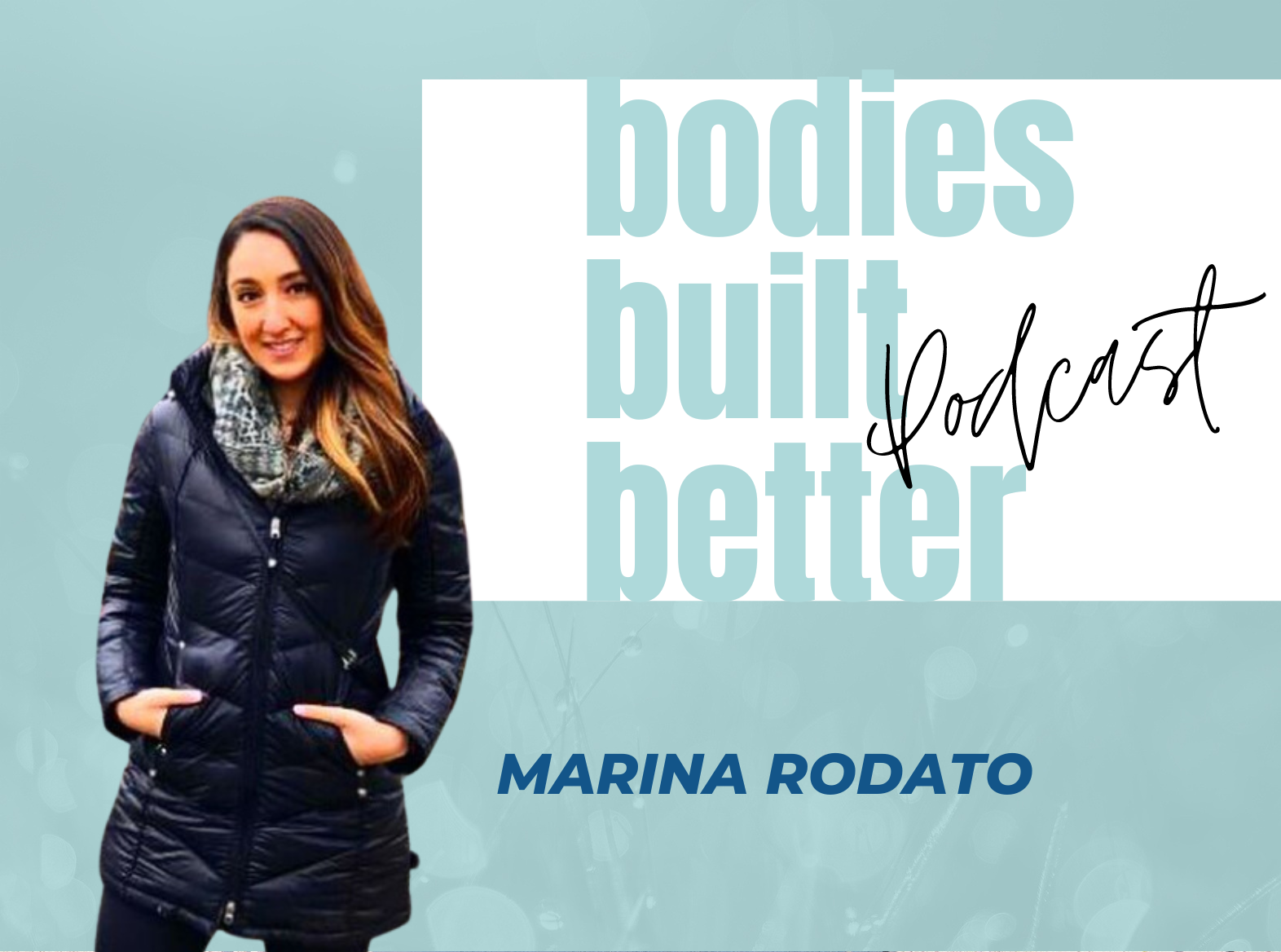Jackie 0:38
Hey, hey, welcome to the Bodies Built better podcast. I am your host, Jackie Tann. And it is so good to have you here today. This podcast is all about human performance, whether that’s performance on the field or showing up at your very best every single day. I chat with athletes, health experts, coaches, and inspiring people doing extraordinary things. We explore the body’s incredible ability to heal, adapt and evolve. So you can crush limitations, reconnect to your body and mind and discover your extraordinary potential. And today on the show, I chat with the founder and director of Advanced Clinical Education, Shaun Brewster. He has spent over 20 years in private practice as a myotherapist and exercise physiologist, and he also teaches both undergraduate and postgraduate programmes. Shaun has a very strong passion for the health industry, which is clear through his never ending contribution to the space through his clinical work, conference presentations, seminars, retreats, articles, podcasts, and so much more. When Shaun isn’t treating clients, he’s running his business Advanced Clinical Education. And that is how I met Shaun. I’ve completed a few courses now with Shaun and the thing that I love about his teaching style and approach is that he breaks down all the science-y jargon, and is able to communicate that in a way that is super easy to grasp and understand. And most importantly, retain and then apply it to your own practice. And so for everyone out there who is thinking, why do I need to learn about how this works? Well, it’s really important if you use massage, as part of your recovery programme, whether you know someone who’s using it or whether you’re wanting to get more out of it. So without further ado, let’s get straight into it with Shaun Brewster.
How To Choose A Massage Therapist
Jackie 2:46
Shaun, thank you so much for chatting with me today. Welcome to the Bodies Built Better podcast.
Shaun 2:52
My pleasure to be here.
Jackie 2:53
It’s so good to have you because I have so many clients that ask so many questions about massage and about copying. And what’s the difference between this and that? And I thought, what better way to answer these questions then to have one of Australia’s best manual therapy educators out there? Sure. Thank you.
Shaun 3:14
Thank you.
Jackie 3:16
So I thought we’d start with a pretty broad question. And that’s around titles. Because for someone who’s looking for someone to help with their shoulder pain, you know, they’ll do a search and you know, up comes a list full of different people like your massage therapists, your remedial massage therapists, there’s manual therapists, there’s myotherapist, and the list goes on. How on earth can they decide, you know, who to see? And you know what the difference is between all of these people?
Shaun 3:51
Yeah, it’s a challenge, isn’t it? And it’s almost like every year someone invents a new title, what we do, and then even with people within those different categories, like you’ll have a massage therapist, and then they will call themselves a tactile therapist or attach a touch therapist or say that every version of it, you know, and it’s no wonder the general public is confused about who does what?
Jackie 4:12
Absolutely.
Shaun 4:13
And I don’t know that there is an easy or simple way for the general public to figure out who they should see. But I think the best thing to do is by word of mouth recommendations, and the other, the other challenging within that is of course that you’ll have, for example, massage therapists. Some of them will work a lot like a physio, and then there’ll be the physiotherapist who will work a lot like an osteopath, and osteopaths who really work nothing like an osteopath and work more like a massage therapist. And so everyone can have their own kind of bias within their modalities and their own focus in the way that they treat. And because of that, you can’t really say that the best person to see for shoulder pain, this one or, the best for knee pain is this person, because each mode, each practitioner within the modality has their own specialty. So I think the best thing is to ask around if you–generally remember, the general public, and you got an ache or pain or some sort of problem. Ask your friends and family who would they see? And then if you’re still confused, a really good gatekeeper for the health profession, if you’ve got a medical problem, is obviously your GP and then they refer out. But the good gate gatekeeper, generally speaking for musculoskeletal type problems as physio, physiotherapist, have a very broad knowledge in assessment and treatment and management. And a good physio will refer on to another person if they don’t think they are the best person to see for that. So your physio is kind of like the triage or could potentially be like a triage nurse where you’ll go to see the hospital go to the hospital, and the triage nurse will say, you’ve got this problem, you need to see this person or that specialist. So because of the physiotherapist’s broad knowledge of musculoskeletal pain, they can potentially point you in the right direction.
What The Studies Say (Or Don’t Say) About Massage
Jackie 5:50
Perfect. Awesome. Well, let’s go to the next biggest question of them all. What does matter? What are the benefits of massage therapy, because there’s lots of people and I guess, opinions that you know, there’s not many studies out there that show that it is, you know, good for your or does have any long term effects. The, you know, massage therapy is one of the biggest recovery methods used by elite sporting clubs all over the world. So there’s something to this natural, it’s so funny around it.
Shaun 6:27
You mentioned the lack of studies to support massage. And that’s, that is a message that is trained by a lot of anti manual therapists. But at the same time, I could point you to hundreds, if not 1000s of studies that support massage. And there is heaps of evidence to support that it is effective for all sorts of different things. The quality of the evidence varies, but that is the case for all modality that leaves only those who say, and so when we hear noise, and that’s all it is about, you know, the low evidence to support massage, or really any manual therapy. It really is just someone who doesn’t have that bias, trying to sell an anti point of view, there is plenty of research. In fact, my website has a whole research library that supports massage and all these other things we do so yeah, it’s easy to find that. So what does massage do? The list is endless. But there’s, there’s also some claims around what it can do that is, that are unfounded. You know that and one of the classic things that I, that really gets my goat is we often say massage and, you know, insert any number of other modalities here helps to remove toxins from the body. Right? If you’ve watched any of my stuff on social media, you’ll know that I really hate this one. Because what toxins are we talking about? First of all? Why are we so toxic? Shouldn’t we be really unwell, we’ve got all these toxins in our body? And then how can possibly physical compression and other techniques that we use with massage move those toxins out of the body? Like where are they coming out of us? Where are they going when they come out? Are they contagious? Could somebody walk past us and catch them? There’s so many, like, absurd questions that come off that statement. So, you know, there’s absolutely things that massage can benefit and we can go into that. But there’s so many things that often a lot of us practice practitioners will claim that that can be achieved through massage that’s just completely unfounded and that’s just old teachings old things that people have kind of remembered to question or or been able to find a way to justify and we have to be really careful with that, I think.
The Real Benefits Of Massage
Jackie 8:35
Absolutely. So let’s dive into the benefits.
Shaun 8:38
The benefits, okay. Well, there’s, there’s very obvious things like circulation improvement, and, and we often throw that one around like okay, so massage improves circulation. But, you know, what’s the benefit of improved circulation? And I’d say that from a tissue level. So if we’ve got a chronic injury, let’s think of the classic example. So your average football player who after, after no preseason training, goes and picks a ball and then his hamstring goes ping. That’s right. I forgot I had a sore, tight hamstring. It’s been three months since I’ve kicked the ball. And then it’s sore again. So these kind-of long-held poorly recovered injuries that sort of peak and trough over the course of a year can sit there under the surface. And yes, absolutely. One of the things that can improve those old injuries is improved circulation, blood supply, nutrition, oxygen. And so massage is one of those things that can improve local tissue perfusion, local tissue supply of blood. So that’s one benefit that can help with the healing process. It also does help with general tissue health. We can have some improvement in lymphatic flow, especially if you’re using specified, specific lymphatic drainage techniques and so on which are much lighter, free gentle massage techniques. We can have changes in pain presentations with classic things like trigger points. Everyone’s heard of a trigger point before. Some people call them knots but I have to point out that muscles don’t tie themselves in knots. unless you get them surgically detached at one end, tie them up and then reattach them again. So that’s, muscles don’t actually have knots, another semis. And so trigger points which can produce all sorts of local and referred pain. And again, part of the reason why massage can help with that is because that improves circulation. So one of the causes of trigger points, one of the symptoms as a result of a trigger point is a bit of a chemical soup in that area of the, of the trigger point which irritates our nerve endings, pain receptors. And again, massage can help to move on some of those irritating chemicals, reduce the, the acidity within that tissue, and therefore reduce the pain that it produces. What else, we can have a change in fascial tension. So the connective tissue that kind of is like the packing foam in our body gives our bodies its shape, at support and protection, insulation, buffering different surfaces in the body, that fascia, connective tissue can change its state based on forces we apply to our body. So if we sit in front of a computer like this all day, with a handful getting closer and closer to the screen as it does, then the tissues in the back of our neck and in the hip flexors and other areas will get shorter and shorter and shorter. If you stay there long enough, that connective tissue starts to deform to that shape. That’s why people that sit at the desk their whole life, get up on the desk, and they still kind of [have] the shape of that desk as they move about. And we see it in the elderly sit in the chair all day, I try to stand up and they can’t straighten up well, so often, that’s a result of that connective tissue shortening, massage is a great way to apply appropriate forces, it triggers some neurological and chemical changes, which we can go into more detail, which then change the state of that connective tissue can improve hydration of that connective tissue elasticity of that connective tissue. And then we get better movement and a range of motion. less restriction.
Jackie 11:51
Yeah, amazing.
Shaun 11:52
That’s just, that’s just scraping the surface and it goes on and on and on.
Is Massage For Everyone?
Jackie 11:55
And if that’s not enough for people to know, what is, you said about the, the athlete who maybe has or hasn’t done a preseason, and it’s gone to kick a ball and there goes his hamstring. One question I get asked by clients is, you know, or typically they’ll come in, I haven’t been feeling any pain. So I haven’t needed to get a massage. But just here we’ve had the, the, you know, example of the athlete in–Yes, you know, training is involved and whatnot, other, other things around that. But you know, people come in and go, should I be, I don’t, I’m not in pain, should I be getting a message?
Shaun 12:34
Yeah, and to be honest, I don’t think everybody needs a massage. And this might fly in the face of a lot of massage therapists who are trying to build a business and repeat clientele. I’ve probably got a little bit of a contrary point of view on this one. And I don’t think as humans, our human bodies need treatment by design. We do things to our bodies, sport, work, certain positions we hold ourselves in for too long, too much exercise, not enough exercise, whatever it might be. And as a result, the tissue capacity that we have, like the ability for our muscles, and tendons and ligaments and bones, to withstand load gets affected negatively. And it’s usually too much or not or not enough is the problem that we apply to our body. And so massage along with other things can be useful to kind of combat some of the symptoms of those environmental stresses that we put in our body. And so the athlete who, you know, said I’m feeling fine, should I get a massage, possibly not. But if they are starting to move towards a higher higher load in their training, or if they’re coming up to the point where they’re going into the to the season, whether the load applied to their body is increasing, then massage and other recovery protocols can be really good to help manage that so that it doesn’t kind of get that peak and, and trickle over the edge and then you’ve got injured. So it is a great recovery tool. It’s not necessarily for every single person. And there are other things you could do, you know, hot and cold baths, you can have people like to use compression boots and a whole range of other things. And the athlete is operating at a really high level. Those things are important for the average, everyday person. If you sleep well, eat well. Exercise regularly. Massage may not be required. It just depends on the situation your body’s in at the time.
Jackie 14:21
Absolutely. What is happening to our bodies after we’ve had a massage, and the next day we go to train or you know, you don’t even have to be someone who’s training. But you’re feeling really lethargic, really out of it.
Explaining Post-Massage “Bliss”
Shaun 14:37
Yeah. Okay. So if you’re really wiped out after a massage and some sort and you’ll always feel the symptoms of that directly after that’s when you most are kind of aware of, that need [to] float off the table and you’ve been firing, but you want to have a sleep. And then there’s the person who pulls up kind of sore or weary, or take the next day, and I guess they’re two different things. So if it’s directly after a massage We get some autonomic changes happening in the body where blood pressure drops. And we have a reduction in, in sympathetic nervous system time, simply nervous systems, your fight or flight response kind of fluctuates between sympathetic and parasympathetic. In any given day in any given moment, based on what’s happening. When you’re on the massage table, you feel comfortable, warm, supportive, safe. So your body goes, I don’t need to be in a flight, I’m not being chased by a tiger, I can go rest and digest parasympathetic. So your body changes into this safe recovery kind of mode. And that’s brilliant, because that’s what we’re trying to achieve a lot of the time. So you get off the table, and you’re very floaty, and you know, and probably ready for sleep. And so that kind of explains that challenge. The person who pulls up weight, potentially saw, take the next day, is still potentially feeling the effects of that.
Why Massage Doesn’t Have To Hurt
Shaun 15:51
But sometimes the massage, particularly if it’s a very strong deep tissue, and so we’ll create some trauma. And it’s a controlled trauma, it’s not necessarily a negative thing. And providing the massage therapist isn’t a go hard or go home kind of therapist, but they just, you know, diving elbows, or That’s right. But we know that’s an outdated model now, and so shouldn’t hurt, it doesn’t have to be painful to be effective. But if they do a little bit too much of that, so that the pressure was too aggressive, it was too much for us to apply to a certain part of the body, maybe the patient perceived pain at a higher level than they necessarily should have been all of those things in can combined to put your body into a little bit of a more of a sympathetic state. And so you might have some strict soreness, the nervous system can be a little fatigued from fighting all of that over time as well. And so there can be some weakness, some decreasing muscle tone, which is useful to manage increased muscle tone. But if you’re an athlete who needs to perform a heat, heavy deep tissue massage that is quite strong, can leave the muscles feeling a little less active, a little less responsive. And so you wouldn’t do a really strong deep tissue massage on an athlete who needs to perform within the next 12, maybe even 24 hours without giving them advice. Okay, turn off to your, to your game, to your training map, warm up properly, really do a lot of dynamic movements to stimulate the nervous system to support that muscular function, because otherwise they go out there feeling just flat.
How To Make The Benefits Last Longer
Jackie 17:19
Exactly, yeah. And so in terms of trying to enhance that, the experience after a massage, is, is there a way that we can make the benefits even better, or last for longer following a massage?
Shaun 17:36
And I guess the answer is yes. But it sort of depends on what the goal of that massage is. So if the goal of the massage is bliss, relaxation, go to another place, then let them go, you know, let them do what they want to do. And having a massage and then trying to get a really good sleep afterwards. It’s good because you’re in that sympathetic state. So the sleep is going to be better. The quality of that sleep, you’d be better. will often say things like drink water, stay hydrated after massage, it helps to flush the toxins out–there we go, the toxins again–if I’m drinking water and toxins are coming out of my body, something–
Jackie 18:09
There’s a problem.
Shaun 18:10
Yeah, that’s right. And look, we all drink water and have to go to the toilet. And that does expel waste products. But then normal waste products. And the number of those workbooks in the urine may not be necessarily that much higher because of the massage. So we should probably kind of forget about that. The advice to give someone about drinking water after massage is good advice, regardless of whether or not such hydration is good for our tissues. And so whether it makes the biggest difference, or massage, I think is up for question. But gentle stretching and moving, it’s kind of a key thing. So we spend a lot of time as massage therapists as health practitioners trying to change the state of the tissues. And then if the person goes from their desk to your clinic, has a massage, that goes back to their desk, goes home, sits on the couch, goes to bed, gets up back to the desk, you can see a pattern that’s not really supporting the change we’ve created. So it might be about giving them advice to combat the patterns that they put on their body. Okay, you’ve had a message today, I know you are feeling great, we want to make that last a bit longer. You’re off to work this afternoon and tomorrow, grab your iPhone, find out, put in a little reminder for every 90 minutes, 60 minutes where you can manage where you’re going to stand up for 30 seconds and move. Here’s some stretches and movements you can do. And because we’ve mentioned that connective tissue before it will start to deform to those shapes you put it in. If we keep changing the situation your body’s in, changing the, the position and the environment, it has a less, less chance that it’s going to deform back as our habits. So the breaking the pattern that caused the problem, I think, is the answer.
What Happens To The Nerves When You Get A Massage
Jackie 19:40
Oh, that’s huge. Yeah. It’s so funny that I’ve had so many there’s not so many there’s been a few times clients will come in and you know what, they’re deep tissue sort of recovering massage and then go do Hill sprints straight off. Yeah, wait a minute. Sorry about that. But you meant And obviously that waist and flushing that through. Tell us more about that, what’s happening in–that in our bodies and let’s move our brains away from toxins. But what’s actually happening?
Shaun 20:12
Yeah, okay. Well, there’s there’s no doubt that we create some mechanical pumping of fluids in the body. And once if you’ve ever played sport and had a massage, we’ve talked when we talk about a flush massage, we’re flushing the tissues out. And I think that is true to a degree, but maybe not to the degree we thought it was where you have a massage, and you feel like someone’s pushing all that lactate, all that waste products out of your sore legs and you feeling better? Well, it’s probably not milking it out of the tissue like we once thought it was. But there it is improving that circulation, which helps to dilute those chemicals so they’re less irritating to the nervous system. So you don’t have the same soreness post treatment. One of the one of the big things that a lot of therapists aren’t aware of is the fact that our nerves have their own lack, I should say, like the run the phytic flow. So nerves can get irritated and inflamed. And a lot of the pain that we experience is neurological pain. So nerves being inflamed by other chemicals around those tissues or within around the nerves, I should say. And so one of the beautiful things about massage, particularly gentle kind of therapeutic massage, is that that gentle compression kind of creates a subtle pumping motion on the nerves, which helps move a lot of the waste products out of the nerves or through them. And so were those irritants might have just accumulated before and produce their own irritation and pain and inflammation. Massage can be useful to to move that those waste through and out of the nerves to reduce the irritation. And that’s, that’s really often overlooked in the effects of massage.
Jackie 21:45
Overlooked, had no idea.
Massage And Breath Work
Shaun 21:48
right. And here’s something even more interesting possibly is that nerves require about 20% of our entire oxygen uptake. So 20% of all the oxygen we breathe is just used for nerve Health, and the blood supply that supplies the nerves, they’ve got their own specific blood supply. So they’re brilliant at taking any energy, oxygen, but they’re not so great at getting rid of their own waste products. And gentle exercise, gentle movement and massage can be useful for that.
Huge Meanwhile, people don’t even know how to breathe properly.
Sometimes, yeah. And look at breath. And breath work has become a huge thing. Right. And just getting people to breathe more fully in your oxygenation can be a great thing for general health, that. Yeah, yeah. Yeah, we have all these muscles that us, that support and assist our breathing process. And we use a small percentage of the, most of the time because it’s enough to keep us alive, but maybe not enough to keep us vital and healthy. And that’s the biggest, the difference.
You can find Shaun and his work on the Advanced Clinical Education website at www.advancedclinicaled.com or on Instagram at @a_c_education. For more inspiration on health and performance, browse through our podcast archives!







